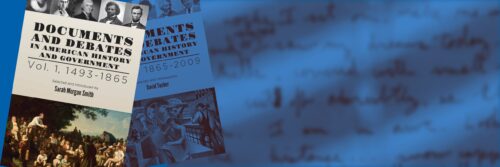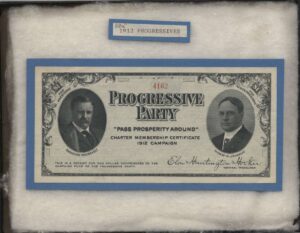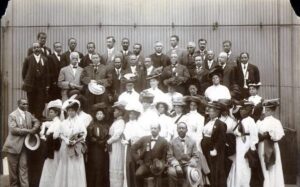
Was John Brown a Terrorist?
John Copeland and Lewis Leary were the last two men to join John Brown’s small band gathering on a Kentucky farm in October 1859. Both free Blacks, they arrived just one day before Brown launched his raid on the federal arsenal at Harpers Ferry. Copeland and Leary were natives of North Carolina, related by marriage, who moved to Oberlin, Ohio, a town founded around a college in 1833 that became a haven for abolitionists by the 1850s. They met Brown in 1858 and decided at the last minute to join his ill-fated effort to seize weapons at the arsenal and distribute them to enslaved persons he hoped to recruit from nearby plantations. Leary suffered a fatal gunshot during the raid, and Copeland, who insisted that he was merely doing what George Washington had done during the American Revolution — fighting for his freedom — was hanged two months to the day after the raid.
Blacks began attending Oberlin College in 1835 following an influx of students from Lane Theological Seminary in Cincinnati who struck a unique bargain with the financially struggling college in 1834. These “Lane Rebels” left Cincinnati after Lane’s trustees banned anti-slavery activities on campus. They agreed to enroll at a newly formed theological school at Oberlin on three conditions: One, the board would respect students’ freedom of speech. Two, the college would not interfere with the theological school’s administration, and third, Oberlin would accept Black students. In 1835, Oberlin fulfilled that last commitment by admitting two students of color, Gideon Quarles and Charles Henry Langston.
Oberlin served as a station on the Underground Railroad. Local abolitionists took advantage of state legislation protecting those accused of being fugitive enslaved persons until a newly elected Democratic state legislature repealed a law granting fugitives the right to seek a writ of habeas corpus in Ohio courts. When John Price, a fugitive enslaved person, was arrested in September of 1858 and held in a Wellington, Ohio jail, a sizable bi-racial group of students and Oberlin townspeople seized Price and smuggled him to freedom. President James Buchanan insisted that the perpetrators of the jailbreak be prosecuted. Although 37 people were indicted, Charles Henry Langston was one of only two men tried for aiding Price’s escape. Langston was convicted but received a light sentence when the judge responded emotionally to Langston’s arguments about the injustice of slavery. It is unknown — likely unknowable — why Leary and Copeland decided to join Brown’s ill-fated mission in Virginia; but perhaps it was the successful rescue of John Price that inspired them.
For over 15 years, I have been a member of a history book club — affectionately known to its members as the Hysterical Book Club. Members rotate selecting a book and hosting a monthly dinner/discussion. Last month’s selection was Tony Horowitz’s Midnight Rising: John Brown and the Raid That Sparked the Civil War. Horowitz, a Pulitzer Prize-winning journalist who died in 2019, was a skilled storyteller who knew how to leave his readers shaking their heads at the “too good to be true” stories woven throughout American history. He concludes Midnight Rising with that kind of tale. Lewis Leary, the free Black man from North Carolina who joined Brown at the last minute, left his home, wife and infant daughter in Oberlin without telling his wife where he was going. Upon learning of his death, supporters of Brown raised some money to provide support for Lewis’s widow Mary, who later married Charles Henry Langston. The couple moved to Kansas, where Mary raised her grandson. She took the boy to Osawatomie, KN , where Brown and several of his sons slaughtered a group of pro-slavery settlers and fought unsuccessfully to protect the town from being burned by pro-slavery forces.. She told him the tale of John Brown in Kansas and at Harpers Ferry, showing him a bullet-riddled shawl she said her first husband had worn during the raid. The boy, named for his grandfather, became one of the most gifted American poets of the twentieth century, Langston Hughes. His ode to the Brown Raid, “October the 16” begins:
Perhaps
You will remember
John Brown
Chapter 14 in Teaching American History’s Documents and Debates in American History and Government, vol. 1, 1493-1865, asks American history students to consider how John Brown should be remembered. Indeed, the chapter’s first Discussion Question asks: Was John Brown a martyr, a madman, or both? It is perhaps an unanswerable question — one destined to be debated forever in book clubs and American history classrooms. We debated it in my history book club, and our only conclusion was that it might help students reach a conclusion to separate the question into two questions. First, was he a terrorist in Kansas when he dragged pro-slavery settlers from their beds and killed them with broadswords—yet not a terrorist in Harpers Ferry, because he was fighting for the liberation of an oppressed people? Second, did he achieve martyrdom by his efforts to free enslaved people and dying for the cause? Or, by embracing violence as a tactic of abolitionism, did he cross an imaginary line dividing noble cause and terrorism?
The documents in this chapter, John Brown’s Raid, cleverly engage students in the timeless question—Do the ends justify the means? They include a fascinating correspondence between abolitionist Lydia Maria Child and pro-slavery Governor Henry Wise of Virginia; opposing assessments of Brown by Horace Greeley and Frederick Douglass; and the lyrics of John Brown’s body — a testimony to his martrydom. Document E, an excerpt from Abraham Lincoln’s Cooper Union Address in 1860, helps students appreciate context. Did Lincoln structure his remarks at Cooper Union to protect his chance to win the Republican nomination for President?
Documents in this chapter include:
A. Lydia Maria Child, Governor Henry Wise of Virginia, and John Brown, Correspondence, October 1859
B. D. H. Strother, A Southern Planter Arming His Slaves to Resist Invasion, November 19, 1859
C. Horace Greeley, “The Whole Affair Seems the Work of a Madman,” October 19, 1859
D. Frederick Douglass, “John Brown Not Insane,” November 1859
E. Abraham Lincoln, Cooper Union Address, February 27, 1860
F. William W. Patton, Lyrics to John Brown’s Body, December 16, 1861
We have also provided audio recordings of the chapter’s Introduction, Documents, and Study Questions. These recordings support literacy development for struggling readers and the comprehension of challenging text for all students.
Teaching American History’s We the Teachers blog will feature chapters from our two-volume Documents and Debates with their accompanying audio recordings each month until recordings of all 29 chapters are completed in August of 2021. In today’s post, we feature Volume I, Chapter 14: John Brown’s Raid on Harpers Ferry. On July 27, we will highlight Chapter 28: Carter and Reagan Respond to an Economic Crisis, from Volume II of Documents and Debates in American History. We invite you to follow this blog closely, so you can take advantage of this new feature as each recording becomes available.



